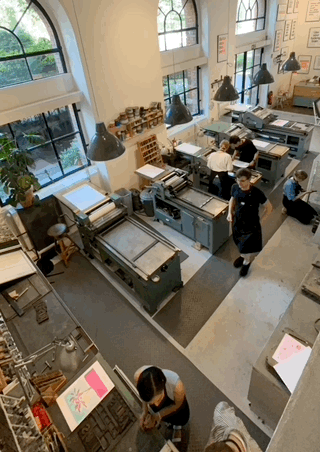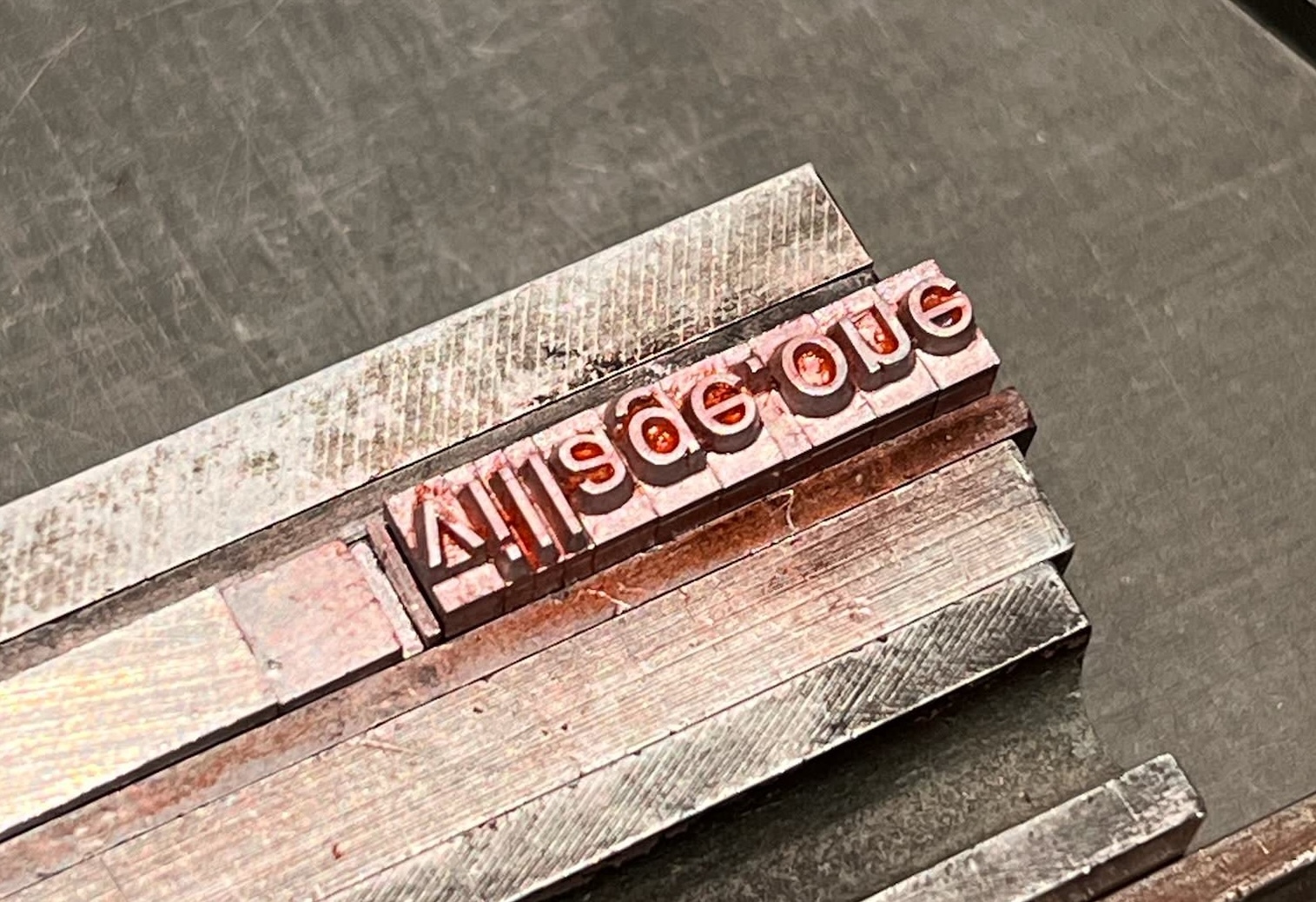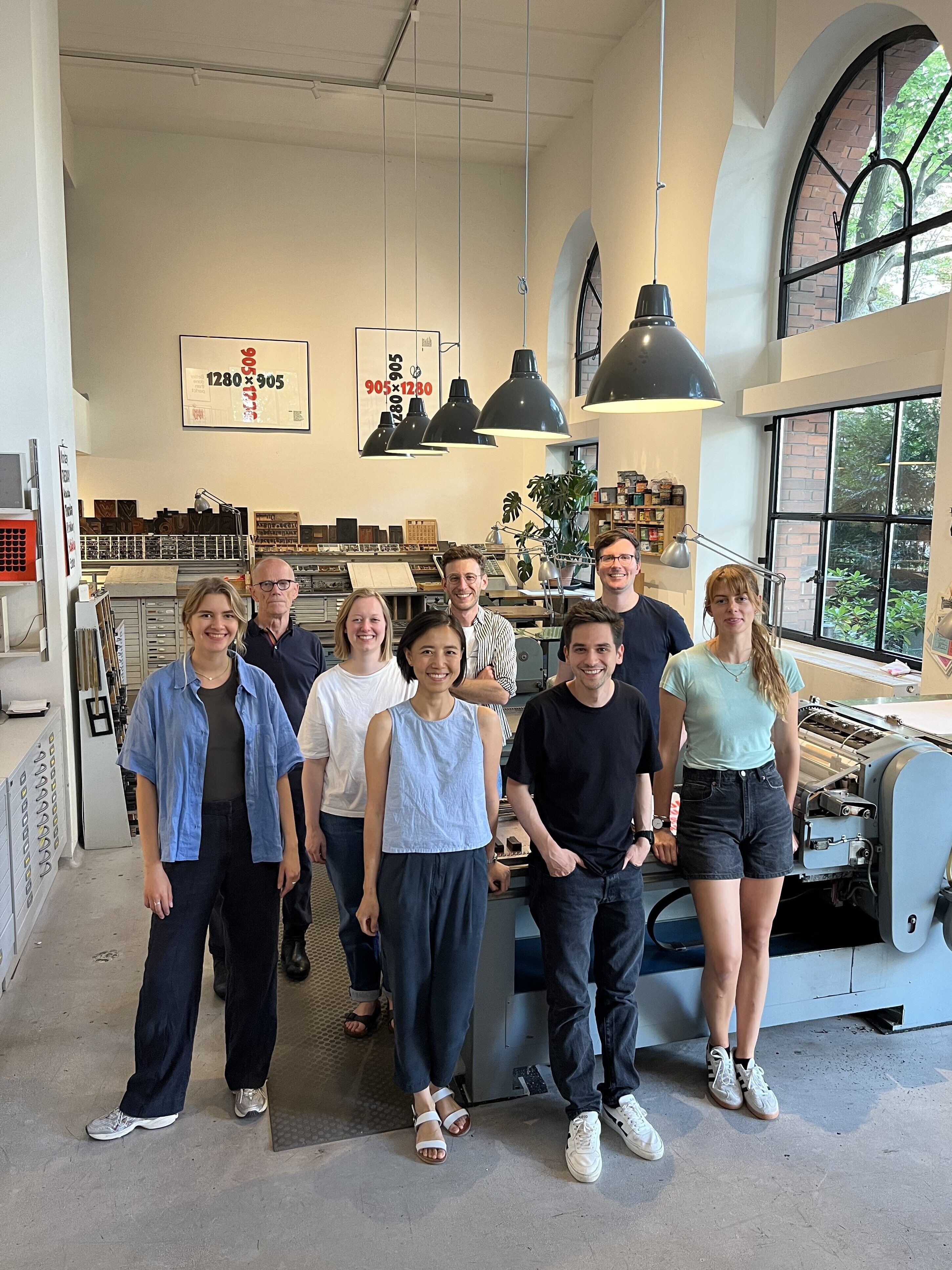We had the pleasure of spending a day at Erik Spiekermann’s letterpress workshop, printing posters together, on historic machines, just like the old times. It was one of the most fun days we ever had as a team.
033: “Best team event ever!”
Even though half of our team had worked with Erik at Edenspiekermann at some point in our careers and we all knew about the magical place that is Hacking Gutenberg, none of us had ever printed anything there. About time then, and so we booked a workshop day, to print posters together with Erik and his team. We were instructed to come prepared—so all six villagers met the day before and workshopped some poster ideas, loosely based on Village One’s values.
We decided to print in two layers: First a riso-printed background, then letterpress on top. On the morning of the workshop, we first listened to Lilith and Lennart explain riso printing to us, while sipping coffee. A riso printer is essentially a big photocopier, which can reproduce prints and even objects in a single color on paper quickly and in large quantities. Then we got to work, drawing, cutting, composing and glueing what should later serve as the backdrop on our posters. After a few hours (and some mild freak-outs), each of our three groups had decided on a motive for their final poster and held a stack of ~30 riso prints in their hands. Time to throw on the aprons and get out the metal type!

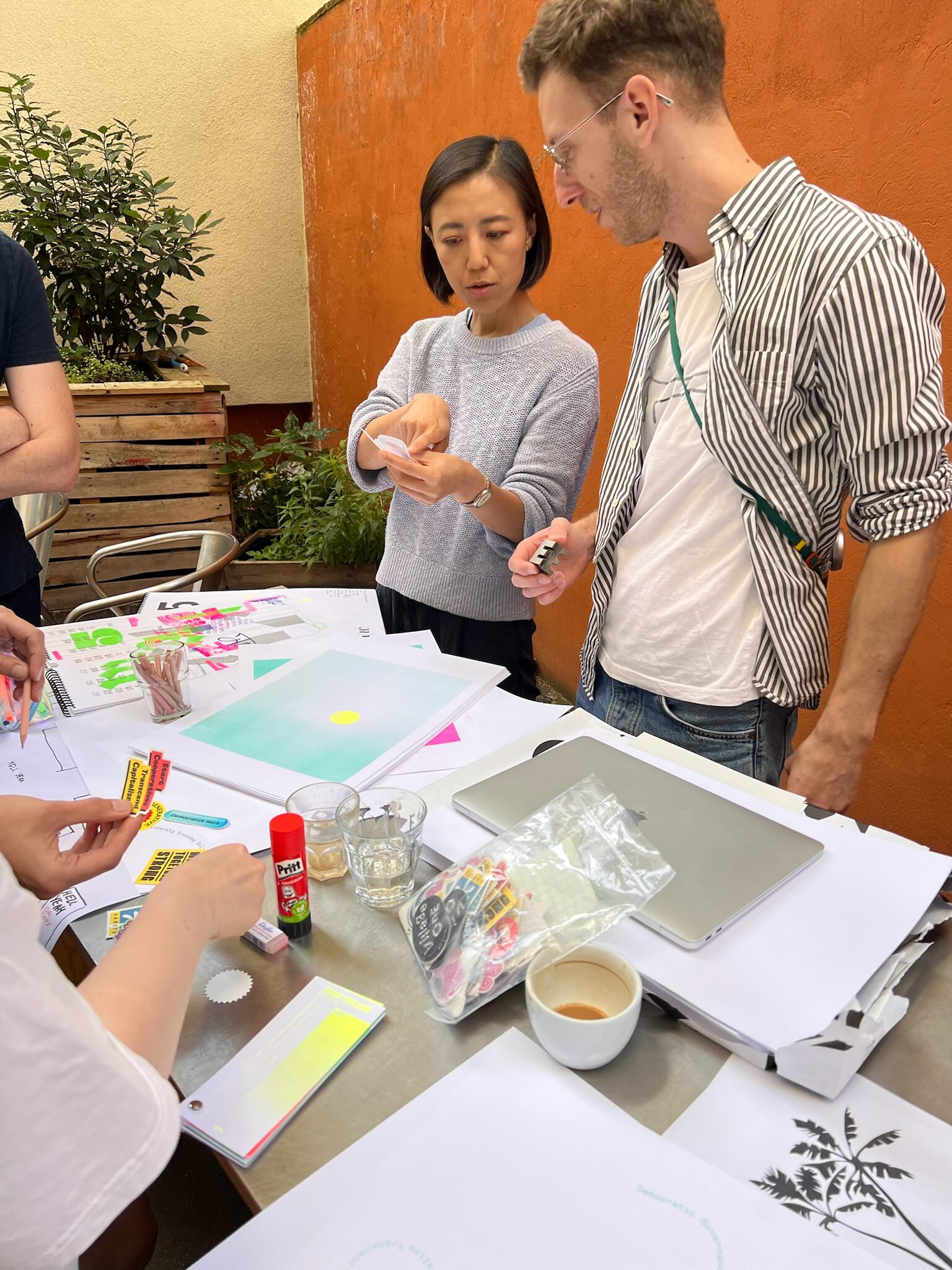

After a quick introduction from Lilith we got to work, selecting typefaces, picking the right size and arranging the letters. The path to the final poster is surprisingly iterative: Make your best guess, do a test print, inspect it, then adjust and test again. After a few attempts we got to something we were happy with and went into “mass production”. That word is in quotes because it’s actually a time-consuming, manual process. You can’t just hit a button and get 30 copies instantly: The letters need to be covered with fresh paint after each print, you have to align the paper, rotate the crank, carry your poster over to the drying rack, and repeat. It’s all so satisfyingly tactile!
You also get to inspect every imperfection and then the opportunity to improve on it during the next print: The letters aren’t uniform enough? Apply paint more evenly. Now they come out too thick and wet? Go back to using less paint, but add a second sheet of paper underneath, to increase pressure from the roll. So much to figure out, so much to tweak. Erik hollers “What you see is what you get” across the room, chuckling. No two posters are the same.
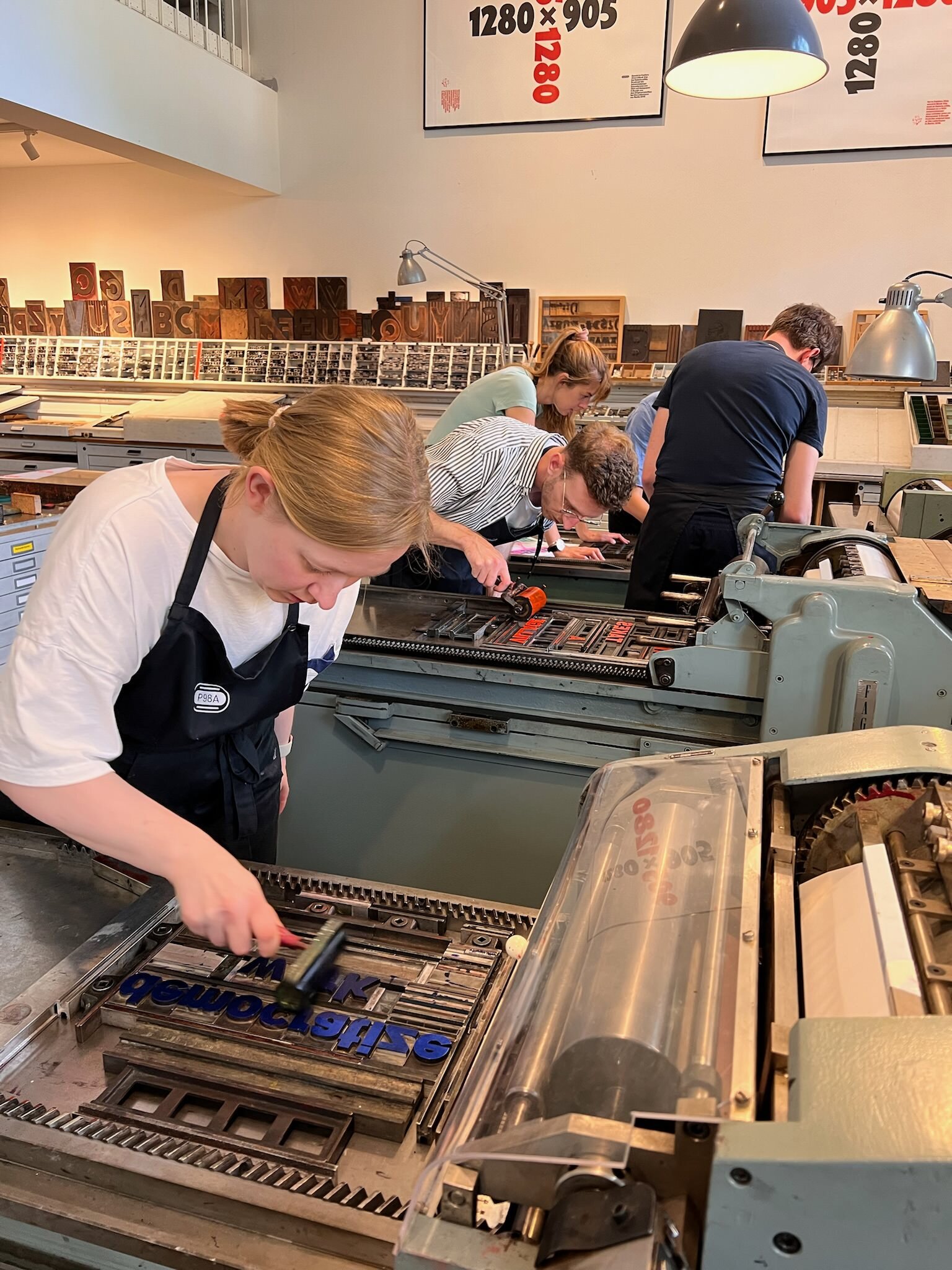
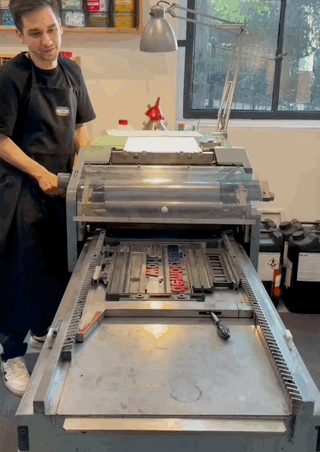
At some point Erik said a word that encapsulates the spirit of Hacking Gutenberg: the German verb “begreifen“. Its closest English translation would be “to grasp“, echoing the German double meaning of touching something with your hands and thereby understanding it. And he’s right: Going through all the drawers, running your fingers over those letters, picking out the right ones to arrange the desired words (mirrored of course, breaking your brain a little bit), then spacing them and building a frame around, applying paint, aligning paper and finally turning a massive machine’s crank to roll the paper across the metal letters, until your words appear on paper … it’s not only fun, but also gives you a glimpse into an analog process mostly forgotten today. Most of us grew up with Microsoft Word, glyphs only a keystroke away on your keyboard, cmd+z to undo any mistakes, where mapping out your page beforehand is optional, because elements can be infinitely, freely adjusted. Letterpress is different; slower, activating your brain in a wholly different way. It takes patience and skill. The type size is fixed. You need to think about what you want to achieve and make a plan how to get there.
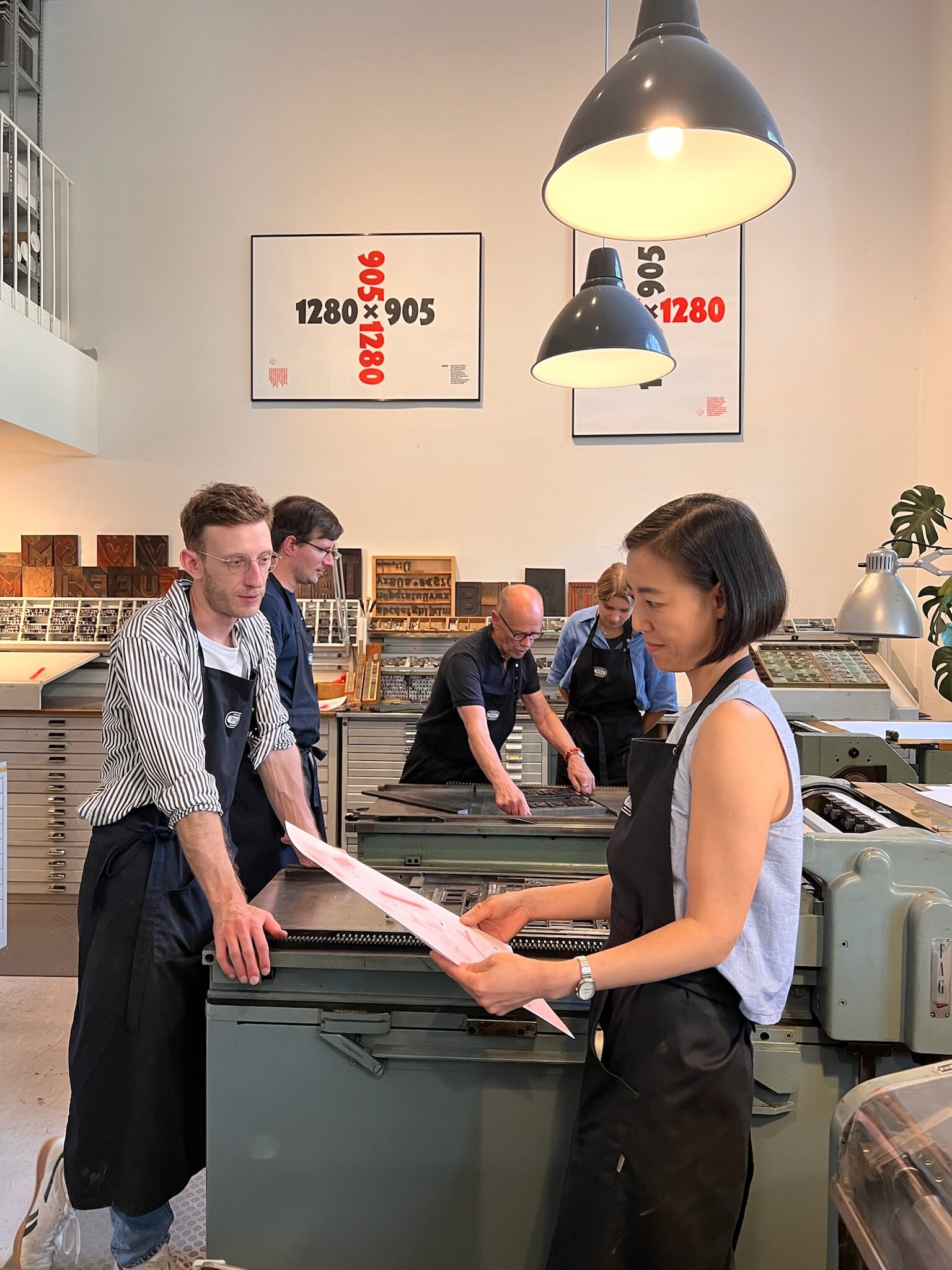
The work isn't done when all the posters are printed—now it’s time to clean up, disassemble your metal compositions and return all the modular pieces back to their shelves. You can’t save your artwork, like you would digitally. Dissambling takes a while and is a weirdly emotional experience. Like having built an epic spaceship with Lego, playing with it for a while and then breaking it apart again. Did it really exist? The proof is on the paper.
As you can probably guess by now, we’ve had a fantastic time. Unfortunately, there’s a catch: This magical, possibly unique place might not exist for much longer. Erik has been looking for a sponsor to keep the lights on (and the machines printing) for a while now, but nobody has stepped up.
Maybe you can help? Two options:
- If you want to experience this place, steeped in printing history and get your hands dirty: Book a workshop with them now! Bring your team, convince your boss! It’s 100% worth it. You can also support them financially as a friend, individually or as a company.
- If you work at or know somebody at a company with deep pockets and a printing legacy (looking at you Adobe, Bertelsmann, other publishing houses, etc), then get Erik in touch with the higher-ups. The amount of money they need might be steep for you and me, but it’s really pocket change for any bigger company. They could help preserve history—Hacking Gutenberg documents how humans have distributed knowledge for centuries, augmenting old techniques with modern technology. And they do that not as a museum, with passive visitors, but as a workshop, where you can touch that history and also gain a new perspective on digital type. It’s a truly magnificent place and it would be an utter shame if it had to close down!
Thanks go out to Lilith and Lennart for helping us every step of the way, Helene for hovering in the background taking photos, and of course Erik for all the snarky comments and personally typesetting the “village.one” mark visible in the corner of each poster. Christoph said afterwards that it was "the best team event ever", and we all eagerly nodded and agreed. We’ll definitely be back!
